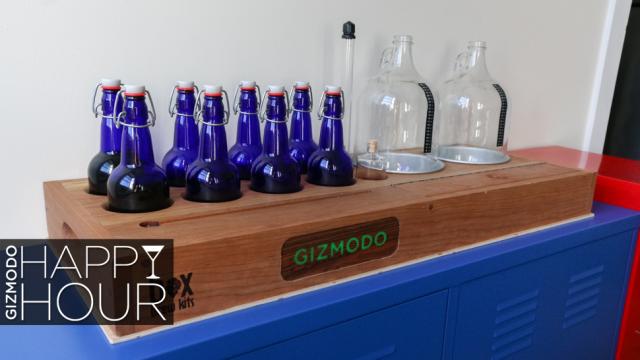Where I grew up people make their own whiskey in rusty bath tubs. Houses explode. Shotguns are fired. Cop chases ensue. Tragedies are inevitable. So when an all-in-one home brew kit showed up at our office, I wondered: How hard can beer be?
As a child of moonshine country, the whole situation’s always intrigued me. Should I try it? Friends of mine have been home-brewing beer for years with great results. But I honestly wasn’t thrilled about shopping around for a bunch of buckets and tubes, only to end up with a glorified chemistry set in my kitchen.
That was about six weeks ago. The Gizmodo staff was mostly hustling to get the last of the gift guides out the door, and I don’t think anyone noticed when the trough-sized box arrived. It was from Box Brew kits, a company I’d never heard of. Four seconds of Googling revealed that this Boston-based startup builds handsome wooden vessels that hold old-fashioned glass bottles and gallon jugs and everything else you need to get started in home brewing.
The kits come in two sizes — one jug or two, basically — and the company sells the kits with all the accessories you need to brew beer. It comes with the hops, grains, and little bags of yeast. The whole setup practically looked like a piece of furniture, and all of the ingredients came ready to brew.
I decided to take it home and give it a try.
The kit
As soon as I got the Box Brew Kit out of the — um — box, I realised the extent of my laziness. A brew kit really isn’t much more than a couple of large containers for holding the beer while it’s brewing, some bottles to put it in after it’s done, and some simple tools that make that process easier. You could really do it with a mop bucket and a radiator hose if you wanted to.
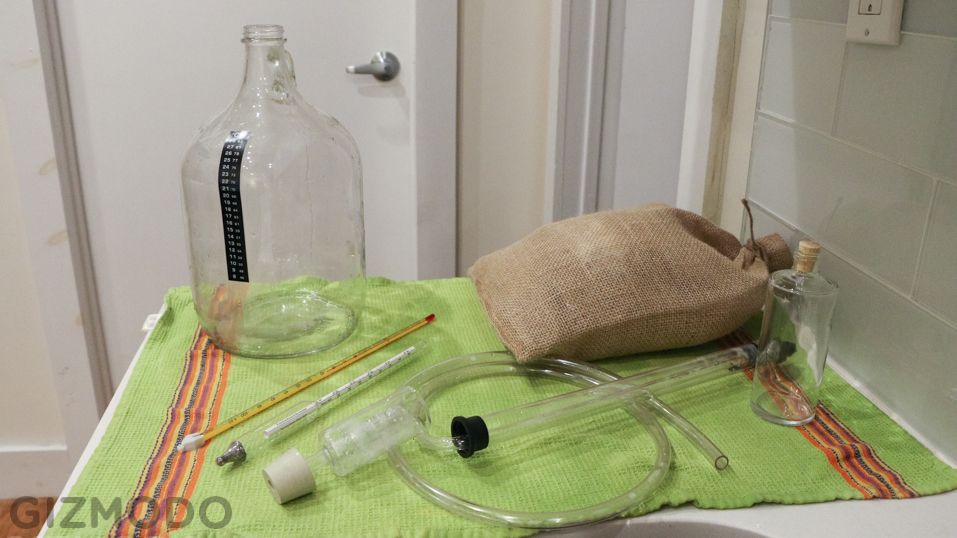
The “Double Barrel” Box Brew Kit I used costs $US280. It looks nice! But if you takeaway the handmade wooden vessel, you’re left with a bunch of very cheap items. I’ve itemized everything and the actual cost below:
- 8 cobalt blue flip-top bottles (a dozen costs $US50 on Amazon)
- 2 glass, one-gallon jugs (about $US10 a piece)
- 2 carboy bungs to seal the jugs during the brew ($US3 a piece)
- 1 mini auto-siphon with tubing ($US18)
- 1 stainless steel funnel ($US6)
- 1 triple scale hydrometer that you will immediately break ($US10)
- 1 laboratory thermometer ($US10)
The ingredients for the beer itself comes in a burlap sack — well, two actually since the kit comes with two recipes.
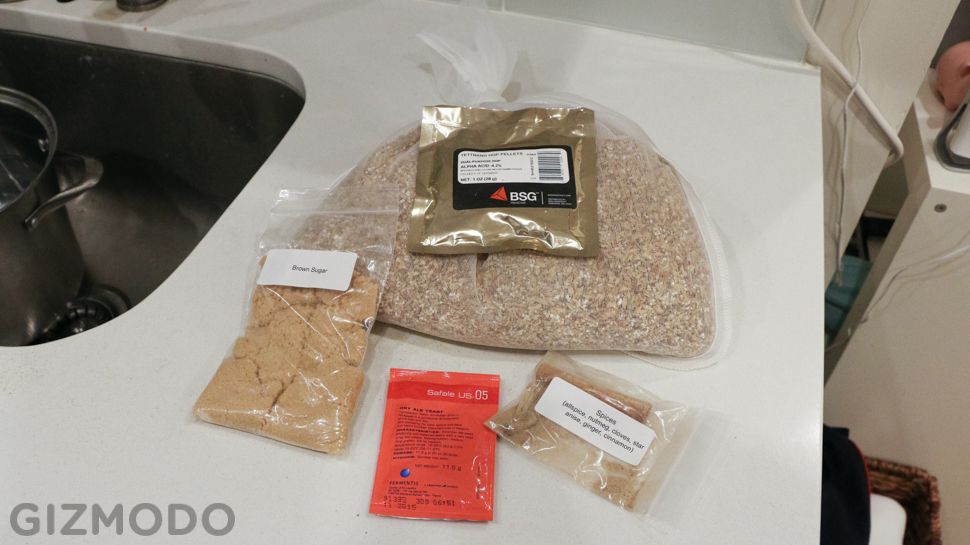
As you probably already know, beer is basically just water, grain, hops, and a little bit of yeast to make the magic happen. Again, this stuff is all pretty cheap.
The brewing
I thought it would be fun to drink beer while making beer. Barrels of fun. However, what I quickly learned is that brewing beer is not a complex process, but it requires a surprising amount of precision. Drinking beer while making beer sounds fun. But you’ll probably fuck it up your first try. I know I did.
Thank god my artisanal Box Brew Kit came with instructions. Bummer the instructions I read in the main booklet and the instructions I read on the recipe itself didn’t match. Both documents hammered home the importance of sanitizing absolutely everything that touches the beer, and I soon found myself spending more time cleaning than brewing, much less drinking!
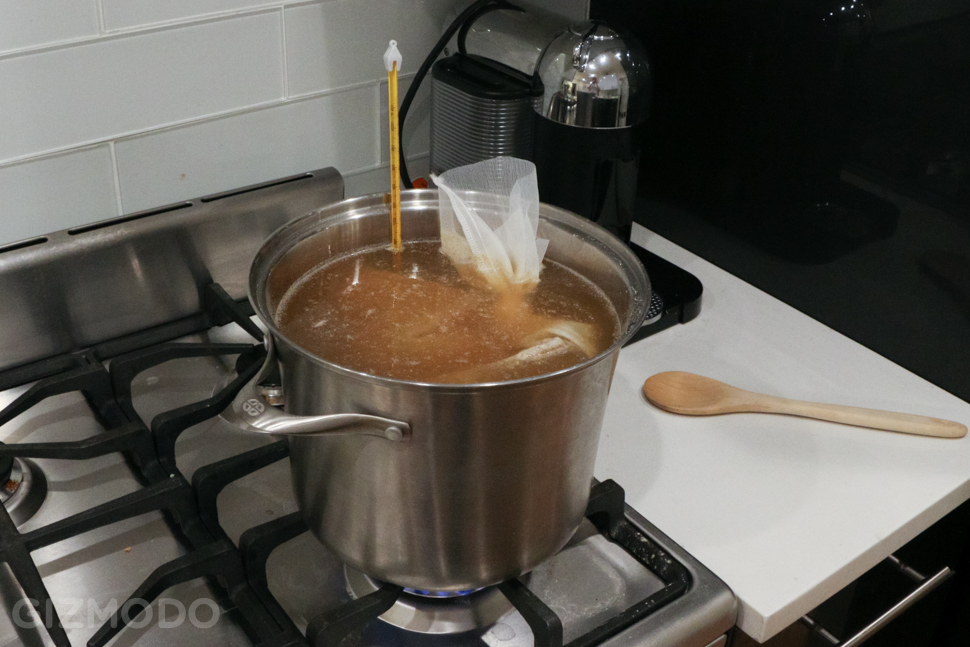
All that said, brewing beer is actually just slightly more advanced than brewing good tea. You have to bring the water to a temperature a bit below boiling, and then plop a muslin sack full of grain in it. The grain steeps in the water at that temperature — or anything but that temperature if you’re a little buzzed and talking to friends instead of paying attention to the stove — for about an hour. Then you’ve got wort.
Wort is basically a sugar-filled potion that yeast and time turn into beer. (Wort is also used to make whiskey, but due to my childhood memories of hillbillies with rusty bathtubs, I’m sticking to beer for now.) Following the recipe, I threw out the grains after the first hour and then added hops. Then, I let the spicy concoction boil for another hour, before it was time to start the fermentation process.
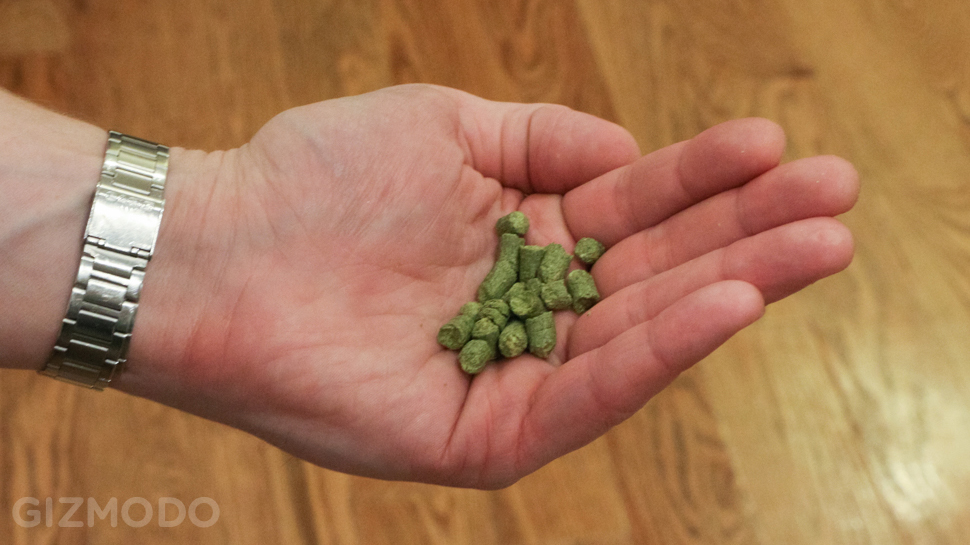
So after the wort cooled to the right temperature, I used the auto-siphon to transfer the beer into the first gallon jug. The liquid was brown, bready-smelling, and basically opaque. I was not looking forward to drinking it.
The fermentation
The last step is the most fun. I say that in part because it’s the easiest step, but it’s also the most scientific. Once all the wort is in the glass jug, I dumped in a little pouch of yeast. The little organism came to life almost right away, gobbling up the sugar in the wort and producing carbon dioxide that makes the beer bubbly.
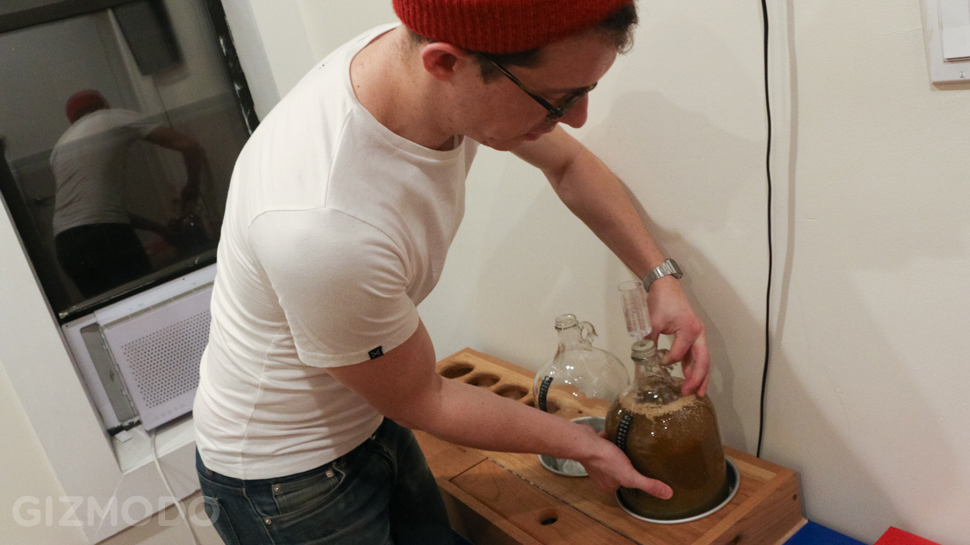
The recipe called for a week in the first jug (a.k.a. first stage fermentation) as well as an optional few days in the second jug (a.k.a. second stage fermentation). You’re supposed to use the insanely fragile, glass, triple scale hydrometer to check the beer’s alcohol content during this process, but I did not because I broke it immediately. And you probably will, too.
At this point, all I could do was wait. Here’s a BeerFest video to keep you entertained during the fermentation part of the brewing process:
If the recipe calls for it — or if you just feel like it — you can continue fermenting the beer in the second jug. This second-stage fermentation allows you leave behind a lot of the extra gunk and sediment from the first stage in the first jug. This, in turn, provides a bit more clarity to your beer. The lack of impurities is also supposed to improve the flavour and yield a better beer. So if you’re not in a huge hurry, you might as well go for it.
The bottling
This part I didn’t totally know about. The final part of the fermentation happens in the bottle. So after watching a small colony of yeast flourish in the middle of my apartment for two weeks, I got out the very pretty blue bottles and the siphon, sanitised the shit out of everything once again, and found what appeared to be a bag of powdered sugar that I’d use to prime the bottles. The powder was pure dextrose and would give the yeast a little bit more food so they could poop out a little bit more carbon dioxide and build up some pressure in the bottle so that the beer is nice and bubbly. You want those pop-tops to pop, you know.
This part felt pretty underwhelming. It’s kind of tedious. I spilled almost-brewed beer all over the kitchen, and quickly learned that I should have added more water before I transferred the wort into the jug. I didn’t have enough beer for all my bottles. (Cue the violins.) And I’d have to wait another week before I could drink the stuff. In my head, I was counting the hours I’d spent on beer and wondering how many times I could run to the bodega across the street for a sixer of ready-to-drink craft beer in the time it took my to sanitize a damn siphon. Patience, patience, patience.
The drinking
“Holy shit, it tastes like beer!” my friend Mike said when he took the first sip of the foggy, baseball glove-coloured elixir that came out of the cobalt pop-top bottle a week after we’d filled them. “It’s good! It’s really, really flat. But it actually tastes like beer.”
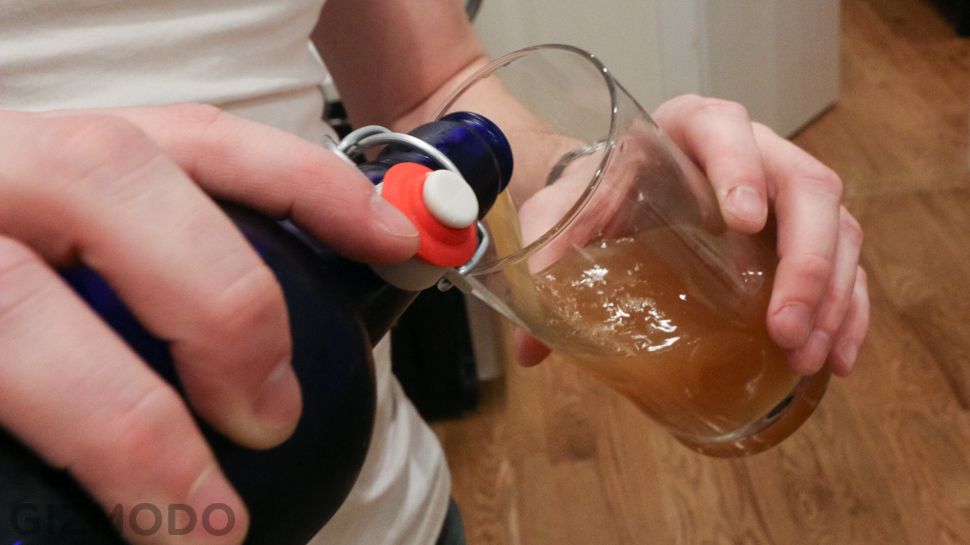
He was painfully right. When we finally tried amber ale, the flavour was there. The carbonation was gone. I blamed my half-lit fits of inattention during the initial phase of the brewing process, but it honestly could’ve been any of several screw-ups along the way. There were some bubbles. But the beer suffered from what’s known as poor head retention. In other words, it didn’t foam good. I’ve since learned that anything from poor sanitation — argh! — to pouring the wrong amount of priming sugar in the bottle can cause this problem. The beer was drinkable. Just not very good.
My friends were nice about the flatness. They wouldn’t shut up about how it “tastes like beer” and asked a few questions about the cloudiness. We got nice and drunk that first night, but I’ll admit that the two six packs of Bell’s Two Hearted Ale that mysteriously disappeared from the fridge while we were “tasting beer” can probably take most of the credit for intoxicating us.
The aftermath
I liked brewing beer. I like cooking, too, which is probably why I wasn’t great at brewing beer at first. I treated the recipe as a roadmap instead of a set of turn-by-turn directions. In terms of precision, brewing beer has more in common with baking than with grilling steaks.
The second batch I brewed with Box Brew Kit took half as much time. It also tasted twice as good. Instead of “Holy shit, this tastes like beer!” from Mike, I got “Holy shit, this tastes like beer I would actually buy in the store!” This was the highest of compliments.
There’s probably some prepper in me that wonders what might happen if I found myself stranded in a cabin, miles away from civilisation and need to be entirely self sufficient. Then, I’d have to brew my own beer, and I’d have time to perfect my craft over the many sad apocalyptic weeks of solitude that stood between me and the inevitable. I’d chop my own wood, grow my own sweet potatoes, and hunt my own fowl. If civilisation ever returned, I could open a gastropub featuring my perfect brew…

I let my mind wander down this road for a second, before I snapped back into it. There I was, standing in my too small Brooklyn apartment with a home brew set up the size of a small surfboard and at least two weeks of waiting between the next batch and me. I like the beer they sell at the store. I’ll probably get busy and bitter about all the sanitation and the threat of flat brew juice in the end.
But the kit’s just sitting there. I can make a better beer, I just know it. All it needs is water, grain, hops, and yeast. I think I’ll brew an IPA next.
Pictures: Adam Clark Estes / Michael Gould-Wartofsky / Michael Hession
